Copyright definition of visual art
In the United States, the law protecting the copyright over a piece of visual art gives a more restrictive definition of "visual art". The following quote is from the Copyright Law of the United States of America- Chapter 1:
A “work of visual art” is —
(1) a painting, drawing, print or sculpture, existing in a single copy, in a limited edition of 200 copies or fewer that are signed and consecutively numbered by the author, or, in the case of a sculpture, in multiple cast, carved, or fabricated sculptures of 200 or fewer that are consecutively numbered by the author and bear the signature or other identifying mark of the author; or
(2) a still photographic image produced for exhibition purposes only, existing in a single copy that is signed by the author, or in a limited edition of 200 copies or fewer that are signed and consecutively numbered by the author.
A work of visual art does not include —
(A)(i) any poster, map, globe, chart, technical drawing, diagram, model, applied art, motion picture or other audiovisual work, book, magazine, newspaper, periodical, data base, electronic information service, electronic publication, or similar publication;
(ii) any merchandising item or advertising, promotional, descriptive, covering, or packaging material or container;
(iii) any portion or part of any item described in clause (i) or (ii);
(B) any work made for hire; or
(C) any work not subject to copyright protection under this title.
Art Glossary
- A -
ABC art: a 1960's art movement and style that attempts to use a minimal number of textures, colors, shapes and lines to create simple three-dimensional structures. Also known as minimalism.
Abstract: art that looks as if it contains little or no recognizable or realistic forms from the physical world. Focus is on formal elements such as colors, lines, or shapes. Artists often "abstract" objects by changing, simplifying, or exaggerating what they see.
Abstract Expressionism: art that rejects true visual representation. It has few recognizable images with great emphasis on line, color, shape, texture, value; putting the expression of the feelings or emotions of the artist above all else.
Accent: to stress, single out as important. As applied to art it is the emphasis given to certain elements in a painting that allows them to attract more attention. Details that define an object or piece of art.
Accession: a process of increasing an art collection by addition; something added to what you already have ("the art collection grew through accession").
Acrylic paint: a fast-drying synthetic paint made from acrylic resin. Acrylic is a fast-drying water-based "plastic" paint valued for its versatility and clean up with soap and water.
Alla prima: the method of oil painting in which the desired effects of the final painting are achieved in the first application of paint as opposed to the technique of covering the canvas in layers with the final painting being achieved at the end.
Applied art: the use of the principles and elements of design to create functional pieces of works of art.
Art: the completed work of an artist which is the expression of creativity or imagination, or both that portrays a mood, feeling or tells a story; works of art collectively.
Art brut: French for "raw art", the art of children and outsiders (naive artists and the mentally ill); actually, anyone not producing art for profit or recognition.
Art deco: a style of design and decoration popular in the 1920's and 1930's characterized by designs that are geometric and use highly intense colors, to reflect the rise of commerce, industry and mass production.
Art nouveau: a decorative art movement that emerged in the late nineteenth century; art characterized by dense asymmetrical ornamentation in sinuous forms, it is often symbolic and of an erotic nature.
Asymmetrical balance: placement of non-identical forms to either side of a balancing point in such a way that the two sides seem to be of the same visual weight.
Atmospheric perspective: a technique used by painters for representing three-dimensional space on a flat two-dimensional surface by creating the illusion of depth, or recession within a painting or drawing. Atmospheric perspective suggests that objects closer to the viewer are sharper in detail, color intensity, and value contrast than those farther away. As objects move closer to the horizon they gradually fade to a bluish gray and details blur, imitating the way distant objects appear to the human eye. Also called aerial perspective.
- B -
Balance: a feeling of equality in weight, attention, or attraction of the various elements within a composition as a means of accomplishing unity.
Birds-eye view: seeing from a point of view from an altitude or from a distance; a comprehensive view in a downward direction; also called an "aerial view".
Bitmap image: a pixel-based image (.BMP) with one bit of color information per pixel, also known as a bitmapped image. The only colors displayed in a bitmapped image are black and white. Its quality decreases when the image is enlarged.
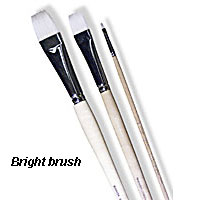 Bright brush: refers to a brush that has the same shape as a "flat" however the hairs are not as long as those on the flat brush. (See illustration.)
Bright brush: refers to a brush that has the same shape as a "flat" however the hairs are not as long as those on the flat brush. (See illustration.)
Brush: a tool used to apply paints and inks to a surface, consisting of hairs, or bristles held in place by a ferrule attached to a handle. The quality of the hair determines the brush’s quality and cost. Each type of brush has a specific purpose, and different fibers are used for different mediums.
Brushstroke: The mark left by a loaded (filled) brush on a surface. Brushstrokes can be distinguished by their direction, thickness, TEXTURE, and quality. Some artists purposefully obscure individual brushstrokes to achieve a smooth surface. Other artists make their brushstrokes obvious to reveal the process of painting or to express movement or emotion.
Brushwork: the distinctive technique in which an artist uses to apply paint with a brush onto a medium, such as canvas.
- C -
Canvas: a heavy, closely woven fabric; an oil painting on canvas fabric; the support used for an acrylic or oil painting that is typically made of linen or cotton, stretched very tightly and tacked onto a wooden frame. Linen is considered far superior to the heavy cotton for a canvas.
Center of interest: an emphasized are of the composition.
Ceramics: the art of making objects of clay and firing them in a kiln. Wares of earthenware and porcelain, as well as sculpture are made by ceramists. Enamel is also a ceramic technique. Ceramic materials may be decorated with slip, engobe, or glaze, applied by a number of techniques, including resist, mishima, and sanggam. Pots made can be made by the coil, slab, some other manual technique, or on a potter's wheel.
Charcoal: Compressed burned wood used for drawing.
CMYK: the abbreviation for cyan (C), magenta (M), yellow (Y) and black (K). It is the colors used in a four color printing process.
Collage: introduced by the Cubists, the technique of creating a work of art by adhering flat articles such as paper, fabrics, string or other materials to a flat surface such as a canvas whereby a three-dimensional result is achieved.
Color permanence: refers to a pigment's lasting power. Tubes and other containers of paint are sometimes labeled with a code indicating a color's degree of permanence.
| Letter code | Degree of color permanence |
| AA | Highest |
| A | Standard |
| C | Less than permanent, though fairly durable |
| C | Fugitive |
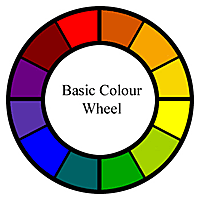 Color separation: A traditional photographic process of separating artwork into component films of cyan, magenta, yellow, and black in preparation for printing to ultimately create a full-color printed product. Recent computer innovations have obviated the need for separated film negatives in certain applications.
Color separation: A traditional photographic process of separating artwork into component films of cyan, magenta, yellow, and black in preparation for printing to ultimately create a full-color printed product. Recent computer innovations have obviated the need for separated film negatives in certain applications.
Color wheel: a round diagram that shows the placement of colors in relationship to each other. It is from the color wheel that “color schemes” are defined (see illustration).
Commercial art: refers to art that is made for the purposes of commerce. The term is somewhat obsolete and is currently being replaced in many colleges with the term "Visual Communication."
Commission:refers to the act of hiring someone to execute a certain work of art or set of artworks.
Complementary colors: two colors directly opposite one another on the color wheel. When placed next to one another, complementary colors are intensified and often appear to vibrate. When mixed, brown or gray is created. Red and green, blue and orange, and yellow and violet have the greatest degree of contrast. Red-violet and yellow-green, red-orange and blue-green, and yellow-orange and blue-violet are also complementary colors.
Composition: the arrangement of the design elements within the design area; the ordering of visual and emotional experience to give unity and consistency to a work of art and to allow the observer to comprehend its meaning.
Computer graphics: refers to visual images made with the assistance of computers. Computer graphics are often made with software called drawing, painting, illustrating and photographic programs or applications.
Contrast: the difference between elements or the opposition to various elements.
Cool color: colors whose relative visual temperatures make them seem cool. Cool colors generally include green, blue-green, blue, blue-violet, and violet.
Cubism: art that uses two-dimensional geometric shapes to depict three-dimensional organic forms; a style of painting created by Pablo Picasso and Georges Braque in the early 20th century whereby the artist breaks down the natural forms of the subjects into geometric shapes and creates a new kind of pictorial space.
- D -
Decorative arts: collective term for such art forms as ceramics, enamels, furniture, glass, ivory, metalwork and textiles, especially when they take forms used as interior decoration.
Depth of field: in photography, the area in front of and behind the focused point that is sharp. A shallow depth of field is used in portraits to provide a soft backdrop, whilst a greater depth of field is useful for landscapes to ensure everything from the foreground to the background is in focus. Shorter (wide angle) lenses and smaller apertures increase depth of field.
Design: the arrangement of the design elements to create a single effect. The organization or composition of a work; the skilled arrangement of its parts. An effective design is one in which the elements of art and principles of design have been combined to achieve an overall sense of unity.
Designing: the process of relating the elements whether they are similar or contrasting and visually arranging an interesting unity with them using the design principles.
Dominance: the emphasis placed on a particular area or characteristic of a work, with other areas or aspects given subordinate or supporting roles.
Double exposure: a technique used in film and photography to expose two images onto one negative, or sheet of photographic paper.
Double loading: refers to loading a brush with two colors side by side. This is a technique typical of tole and other kinds of decorative painting. Also known as "side loading".
- E -
Easel: an upright support (generally a tripod) used for displaying something. It is most often used to hold up an artist's canvas while the painter is working or to hold a completed painting for exhibition.
Egg tempera: A medium created by mixing pure, ground pigments with egg yolk. This was a very common medium before the invention of oil paints.
Elements of design: those qualities of a design that can be seen and worked with independently of its figurative content. They include line, form, value, texture, color, and shape.
Emphasis: the stress placed on a single area of a work or a unifying visual theme.
En plein air: French for "in open air," used to describe paintings that have been executed outdoors, rather than in the studio.
Etching: an impression made from an etched plate; an intaglio process in which an image is scratched through an acid-resistant coating on a metal plate. The plate is then dipped in acid which eats into the exposed surface.
Exhibition - A public showing of a piece or a collection of objects. Also called an exhibit.
Expressionism: Post-World War I artistic movement, of German origin, that emphasized the expression of inner experience rather than solely realistic portrayal, seeking to depict not objective reality but the subjective emotions and responses that objects and events arouse in the artist.
- F -
Filbert: brushes used to create soft edges, blend colors, and has the shape of a flower petal or leaf. (See illustration.)
Filigree: a technique used to produce fine intricate patterns in metal. Often used for metal beads, clasps, and bead caps.
Fixative: a liquid, similar to varnish, which is usually sprayed over a finished piece of artwork to better preserve it and prevent smudging. Artwork media requiring fixative include drawings done in pencil, charcoal, and pastel.
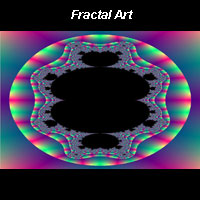
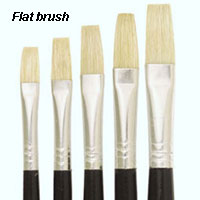 Flat brush: a brush with a flat shaped end like a screwdriver. (See illustration.)
Flat brush: a brush with a flat shaped end like a screwdriver. (See illustration.)
Foam core: a strong, stiff, resilient, and lightweight board of polystyrene laminated with paper on both of its sides used as backing for art prints before framing. Also referred to as "foam board".
Focal point: a specific area, element or principle that dominates a work of art; the area in a work which the eye is most compellingly drawn. The viewer's eye is usually drawn there first.
Folk art: Art of people who have had no formal, academic training, but whose works are part of an established tradition of style and craftsmanship.
Font: a complete set of characters in a particular size and style of type. This includes the letter set, the number set, and all of the special character and diacritical marks you get by pressing the shift, option, or command/control keys.
Foreshortening: A form of perspective where the nearest parts of an object or form are enlarged so that the rest of the form appears to go back in space; To shorten an object to make it look as if it extends backwards into space.
Fractal: a mathematically generated pattern that is reproducible at any magnification or reduction. A geometric pattern that is repeated at ever smaller scales to produce irregular shapes and/or surfaces that cannot be represented by classical geometry. (See illustration.)
Frame: something made to enclose a picture or a mirror; enclose in a frame, as of a picture.
Fresco: The technique of blending wet plaster with water based paint. As the plaster dries it becomes a lasting surface base. The term applies to the technique as well as the painting itself.
Fugitive colors - short-lived pigments capable of fading or changing, especially with exposure to light, to atmospheric pollution, or when mixed with certain substances.
- G -
GIF: an acronym for "Graphic Interchange Format", an image format type generated specifically for computer use. Its resolution is usually very low (72 dpi, or that of your computer screen), making it undesirable for printing purposes.
Gild the lily: a phrase meaning to add unnecessary ornamentation to something already beautiful.
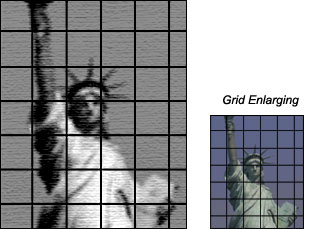 Gilding: the application of a gold finish. It can be achieved by applying gold leaf, or by using metallic powders.
Gilding: the application of a gold finish. It can be achieved by applying gold leaf, or by using metallic powders.
Glaze: a thin layer of translucent acrylic or oil paint applied to all or part of a painting, to modify the tone or color underneath. Glazing is the process of using this technique.
Gold leaf: an extremely thin tissue of gold used for gilding.
Graphic art: two-dimensional art forms such as drawing, engraving, etching and illustration in their various forms.
Graphic design: the applied art of arranging image and text to communicate a message. It may be applied in any media, such as print, digital media, motion pictures, animation, product decoration, packaging, and signs. Graphic design as a practice can be traced back to the origin of the written word, but only in the late 19th century did it become identified as a separate entity.
Graphite: a soft, black, lustrous mineral made of carbon used in lead pencils, paints, crucibles, and as a lubricant.
Grayscale: refers to the range of gray tones between black and white (see illustration).

Grid: refers to a series of crossed lines that meet to form a boxed pattern used in the predetermined placement of photographs and graphic elements on a page. A series of non printing horizontal and vertical rules assist in creating and maintaining a grid for page layout (see illustration).
Grid enlarging: the process of using a grid to enlarge an image; for copying very precisely, another image, on the same or a different scale, usually larger; used in scaling an image by drawing (see illustration).
Grisaille: Monochrome painting generally employing shades of gray executed in a black pigment and an inert white pigment in oil, gouache or tempera; a stained glass window incorporating muted tones as opposed to bright colors.
- H -
Halftone: The reproduction of a continuous tone original, such as a photograph, in which detail and tone value are represented by a series of evenly spaced dots of varying size and shape.
Harmony: the unity of all the visual elements of a composition achieved by the repetition of the same characteristics or those which are similar in nature.
Horizon line: in a painting, a level line where land or water ends and the sky begins. Vanishing points, where two parallel lines appear to converge, are typically located on this line. A horizon line is used to attain the perspective of depth.
Hue: the name of the color, such as red, green or yellow. Hue can be measured as a location on a color wheel, and expressed in degrees; the main attribute of a color which distinguishes it from other colors.
- I -
Icon: an artistic visual representation or symbol of anything considered holy and divine, such as God, saints or deities. An icon could be a painting (including relief painting), sculpture, or mosaic. Also refers to a little picture on a computer screen that represents the various functions of the computer. Generally the user clicks on an icon to start an application or function.
Illustrate: to create designs and pictures for books, magazines, or other print or electronic media to make clear or explain the text or show what happens in a story.
Illustration: a visualization such as drawing, painting, photograph or other work of art that stresses subject more than form. The aim of an Illustration is to elucidate or decorate a story, poem or piece of textual information (such as a newspaper article) by providing a visual representation of something described in the text.
Illustrator: a graphic artist who specializes in enhancing written text by providing a visual representation that corresponds to the content of the associated text. Also refers to a computer illustration program developed by Adobe Systems, Inc.
Implied line:a line in a work that is subtlety perceived by the viewer but has no physical form; the overall flow of one line into another in a work, with continuation from one area to the next suggested by their common direction and/or juxtaposition.
Impressionism: a loose spontaneous style of painting that originated in France about 1870. The impressionist style of painting is characterized chiefly by concentration on the general impression produced by a scene or object and the use of unmixed primary colors and small strokes to simulate actual reflected light.
Industrial design: the design of the mass-produced products of our everyday environment, from sinks and furniture to computers.
- J -
JPEG: an acronym for "Joint Photographic Experts Group" is a commonly used standard method of compressing photographic images on the Web. JPEG graphics are capable of reproducing a full range of color while still remaining small enough for Web use.
Justified type: in typography, Text spaced out between words to create columns with both edges flush or evenly aligned. With narrow columns, justification can create awkward gaps. However, with wide columns, justification can add elegant symmetry.
Juxtaposition: the act of placing or positioning items in the image area side by side or next to one another to illustrate some comparison.
- K -
Kern: in typography, to reduce space between two or three characters so those characters appear better fitted together. Also referred to as kerning.
Kiln: (pronounced "kill") refers to an oven in which pottery or ceramic ware is fired.
- L -
Lacquer: refers to a clear or colored finish material that dries to a hard, glossy finish. Usually applied with a sprayer, lacquer dries too quickly for smooth application with a brush, unless it is specially formulated.
Landscape: a painting, drawing or photograph which depicts outdoor scenery. They typically include trees, streams, buildings, crops, mountains, wildlife, rivers and forests.
Life drawing: drawings of a human figure. Usually of nude figures so that the artist can understand how the muscles look and how light, tone and shadow reflect around the body.
Likeness: refers to the similarity in appearance or character or nature between persons or things.
Limited edition: a limit placed on the number of prints produced in a particular edition, in order to create a scarcity of the print. Limited editions are signed and numbered by the artist. Once the prints in the edition have been sold out, the digital file is then destroyed by the Giclée Printmaker in order to maintain the integrity of the limited edition. The image will not be published again in the same form.
Linear perspective: a system for creating the illusion of depth on a two-dimensional surface. The system is based on a scientifically or mathematically derived series of actual or implied lines that intersect at a vanishing point on the horizon. Linear perspective determines the relative size of objects from the foreground of an image to the background.
Linseed oil: the most popular drying oil used as paint medium. The medium hardens over several weeks as components of the oil polymerize to form an insoluble matrix. Driers can be added to accelerate this process.
Lithography: uses the principle that oil and water don't mix as the basis of the printing process; a method of printing using plates whose image areas attract ink and whose non image areas repel ink. Non image areas may be coated with water to repel the oily ink or may have a surface, such as silicon, that repels ink.
Local color: an objects true color; the actual color as distinguished from the apparent color of objects and surfaces; true color, without shadows or reflections.
- M -
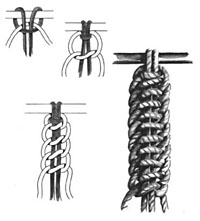 Macramé: an old craft form of textile-making using knotting rather than weaving or knitting. Its primary knots are the square knot and forms of hitching (full hitch and double half hitches). It has been used by sailors, especially in elaborate or ornamental knotting forms to decorate anything from knife handles to bottles to parts of ships (see illustration).
Macramé: an old craft form of textile-making using knotting rather than weaving or knitting. Its primary knots are the square knot and forms of hitching (full hitch and double half hitches). It has been used by sailors, especially in elaborate or ornamental knotting forms to decorate anything from knife handles to bottles to parts of ships (see illustration).
Magenta: one of the four process colors, or CMYK, the M is for magenta. A color also known as fuchsia and hot pink; a moderate to vivid purplish red or pink.
Mannerism: A style of art that developed in the sixteenth century as a reaction to the classical rationality and balanced harmony of the High Renaissance; characterized by the dramatic use of space and light, exaggerated color, elongation of figures, and distortions of perspective, scale, and proportion.
Marbling: the art or process of producing certain patterns of a veined or mottled appearance in imitation of marble by means of colors so prepared as to float on a mucilaginous liquid which possesses antagonistic properties to the colors prepared for the purpose.
Masterpiece: a work done with extraordinary skill, especially a work of art, craft or intellect that is an exceptionally great achievement.
Medium: material or technique an artist works in; also, the component of paint in which the pigment is dispersed.
Miniature: a representational work of art made on a greatly reduced scale.
Minimal design: omitting all non-essential or un-important elements and details which don't really contribute to the essence of the overall composition in order to emphasize what is important.
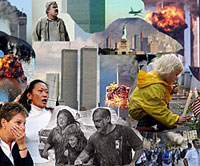 Minimalism: a movement and style of art from the 20th century which attempts to reduce art to the basic geometric shapes with the fewest colors, lines, and textures. Minimal art does not seek to be representational of any object. Also known as ABC art.
Minimalism: a movement and style of art from the 20th century which attempts to reduce art to the basic geometric shapes with the fewest colors, lines, and textures. Minimal art does not seek to be representational of any object. Also known as ABC art.
Mixed media: the art technique where an artist employs different types of physical materials such as ink and pastel or painting and collage etc. and combines them in a single work.
Monochromatic: a color scheme limited to variations of one hue, a hue with its tints and/or shades.
Monochrome: painting done in a range of tones of a single color.
Montage: an artwork comprising of seemingly unrelated shots or scenes which, when combined of various existing images such as from photographs or prints and arranged so that they join, overlap or blend to create a new image which achieve meaning (as in, shot A and shot B together give rise to an third idea, which is then supported by shot C, and so on) (see illustration) .
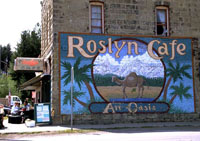 Mosaic: an art medium in which small pieces of colored glass, stone, or ceramic tile called tessera are embedded in a background material such as plaster or mortar. Also, works made using this technique.
Mosaic: an art medium in which small pieces of colored glass, stone, or ceramic tile called tessera are embedded in a background material such as plaster or mortar. Also, works made using this technique.
Mural: a large wall painting, often executed in fresco (see illustration).
- N -
Naïve art: art created by untrained artists. It is characterized by simplicity and a lack of the elements or qualities found in the art of formally trained artists.
Neutral color: colors of very low saturation, approaching grays.
- O -
Oil paint: a type of paint made from color particles( pigment) and linseed oil. Oil paint dries slowly, can be used thick or thin, and with glazes. Because it dries slowly, oil paint is easier to blend from dark to light creating the illusion of three-dimensions. Used by most artists since the Renaissance.
Outsider art: refers to works by those outside of mainstream society. Outsider art broadly includes folk art and ethnic art as well as by prisoners, the mentally ill and others neither trained in art nor making their works to sell them.
Overpainting: the final layer of paint that is applied over the under painting or under layer after it has dried. The idea behind layers of painting is that the under painting is used to define the basic shapes and design so that the overpainting can be used to fill in the details of the piece.
- P -
Painterly: painting technique characterized by openness of form, in which shapes are defined by loose brushwork in light and dark color areas rather than by outline or contour.
Palette: A thin piece of glass, wood or other material, or pad of paper, which is used to hold the paint to be used in painting; also, the range of colors used by a particular painter.
Paper mâché: a technique for creating forms by mixing wet paper pulp with glue or paste. The form hardens as it dries, and becomes suitable for painting. Although paper mâché is a French word which literally means "chewed paper", it was originated by the Chinese - the inventors of paper.
Papyrus: the predecessor of modern paper made from the pith of the papyrus plant used by the ancient Egyptians, Greeks and Romans.
Parchment: an early paper material highly valued during the middle ages. Originally made from goat or sheep skin, parchment today is made from organic fibers and affords artists such as calligraphers a crisp, smooth, high quality surface on which to write.
Pastel: a crayon made from pigment mixed with gum and water and pressed into a stick-shaped form; a work of art created from pastels; a pale color.
Perspective: the art of picturing objects on a flat surface so as to give the appearance of distance or depth.
Photorealism: a style of painting in which an image is created in such exact detail that it looks like a photograph; uses everyday subject matter, and often is larger than life.
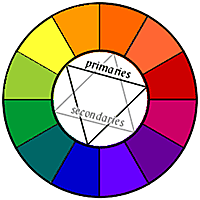 Photoshop: a professional image-editing and graphics creation software from Adobe. It provides a large library of effects, filters and layers.
Photoshop: a professional image-editing and graphics creation software from Adobe. It provides a large library of effects, filters and layers.
Pigment: any coloring agent, made from natural or synthetic substances, used in paints or drawing materials; the substance in paint or anything that absorbs light, producing (reflecting) the same color as the pigment.
Plane: a shape which is essentially two-dimensional in nature but who's relationship with other shapes may give an illusion of the third dimension.
Plein air: French for "open air", referring to landscapes painted out of doors with the intention of catching the impression of the open air.
Pointillism: a painting technique in which pure dots of color are dabbed onto the canvas surface. The viewer's eye, when at a distance, is then expected to see these dots merge as cohesive areas of different colors and color ranges.
Pop art: a style of art which seeks its inspiration from commercial art and items of mass culture (such as comic strips, popular foods and brand name packaging). Certain works of art created by Andy Warhol and Roy Lichtenstein are examples of pop art.
Portrait: a painting, photograph, or other artistic representation of a person.
Potter's wheel: a horizontal disk revolving on a spindle and carrying the clay being shaped by the potter.
Pottery: a form of ceramic technology, where wet clays are shaped and dried, then fired to harden them and make them waterproof.
Primary colors: red, yellow, and blue. With these three colors (and black and white) all other colors can be made. The primary colors themselves can not be made by mixing other colors (see illustration).
Primitive art: Art that has imagery of folk art , it places emphasis on form and expression and often looks child like.
Principles of design: the basic aesthetic considerations that guide organization of a work of art. They include balance, movement, emphasis, contrast, proportion, space, and unity.
Proportion: a sense of appropriateness in the size relationship of different parts of a work.
Pure symmetry: an equilibrium created by identical parts that are equally distributed on either side of a real or imaginary cent4ral axis in mirror-like repetition.
- Q -
Quill: a pen is made from a flight feather (preferably a primary) of a large bird, most often a goose. Quills were used as instruments for writing with ink before the metal dip pen, the fountain pen, and eventually the ball point pen came into use.
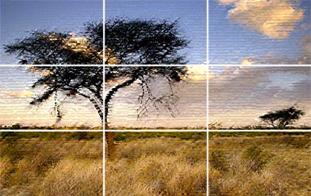 Quilting: the process of making a Quilt from beginning to end. Or the actual act of sewing the layers of a quilt together, either by hand or by machine. Also refers to the finished lines of sewn thread that make up the quilting design.
Quilting: the process of making a Quilt from beginning to end. Or the actual act of sewing the layers of a quilt together, either by hand or by machine. Also refers to the finished lines of sewn thread that make up the quilting design.
- R -
Realism: a style of painting which depicts subject matter (form, color, space) as it appears in actuality or ordinary visual experience without distortion or stylization.
Reproduction: a copy of an original print or fine art piece. A reproduction could be in the form of a print, like an offset-lithographic print, or even reproduced in the same medium as the original, as in an oil painting.
Right brain: refers to a theory in which the right side of the brain is the creative side, responsible for art and spatial comprehension, while the left side is responsible for reading, verbal, and mathematical sorts of tasks.
Rule of thirds: a composition rule that divides the scene into three rows and three columns. The rule states that the painting is much more interesting if the focal point is not in the center of the canvas but rather in one of the outlying regions, preferably at one of the intersection points (see illustration).
- S -
Sable brush: an artist's brush made of sable hairs.
Seascape: a painting or work of pictorial art that depicts the sea or a scene that includes the sea; a painting representing an expansive view of the ocean or sea; picture or painting depicting life around the sea.
Self portrait: a portrait an artist makes using himself or herself as its subject, typically drawn or painted from a reflection in a mirror. Also a portrait taken by the photographer of himself, either in a mirror, by means of a remote release, or with a self timer.
Sepia: a golden brown tint sometimes applied to black-and-white pictures. Can give the finished print an antique appearance.
Shade: a color produced by adding black to a pigment.
Shading: showing change from light to dark or dark to light in a picture by darkening areas that would be shadowed and leaving other areas light. Shading is often used to produce illusions of dimension and depth (see illustration).
Shape: an area which stands out from the space next to it or around it because of a defined boundary or because of a difference of value, color, or texture.
Sienna: a form of limonite clay most famous in the production of oil paint pigments. Its yellow-brown color comes from ferric oxides contained within. As a natural pigment, it (along with its chemical cousins ochre and umber) was one of the first pigments to be used by humans, and is found in many cave paintings.
Silhouette: a dark image outlined against a lighter background.
Simplicity: the understanding of what is and is not important in a design. Details that do not have a major impact to the design are omitted to keep it uncluttered.
Sketch: a rough drawing used to capture the basic elements and structure of a situation often used as the basis for a more detailed work.
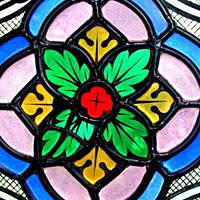 Space: the interval or measurable distance between pre-established points.
Space: the interval or measurable distance between pre-established points.
Stained glass: glass that has been colored or stained through different processes. This term is also used to refer to the art of cutting colored glass into different shapes and joining them together with lead strips to create a pictorial window design (see illustration).
Stencil: Stiff paper (or other sheet material) with a design cut into it as a template for shapes meant to be copied. Also a method of applying a design by brushing ink or paint through a cut-out surface.
Still life: a painting or other two-dimensional work of art representing inanimate objects such as bottles, fruit, and flowers. Also, the arrangement of these objects from which a drawing, painting, or other art work is made.
Stippling: a drawing technique consisting of many small dots or flecks to construct the image; technique of using small dots to simulate varying degrees of solidity or shading; to paint, engrave, or draw by means of dots or small touches of the brush, pen, or other tool.
Stomp: A kind of pencil consisting of a tight roll of paper or soft leather, or of a cylindrical piece of rubber or other soft material used for rubbing down hard lines in pencil or crayon drawing, for blending the lines of shading so as to produce a uniform tint.
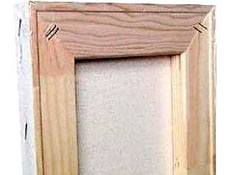 Stretcher: a wooden frame over which the canvas of a painting is stretched (see illustration).
Stretcher: a wooden frame over which the canvas of a painting is stretched (see illustration).
Support: the material providing a surface upon which an artist applies color, collage, etc.
Surrealism: an art style developed in Europe in the 1920's, characterized by using the subconscious as a source of creativity to liberate pictorial subjects and ideas. Surrealist paintings often depict unexpected or irrational objects in an atmosphere of fantasy, creating a dreamlike scenario; An art movement in which one's dreams, nightmares, sub consciousness and fantasy inspired the final works.
- T -
Tension: to make tense, tighten or stress.
Texture: the tactile surface characteristics of a work of art that are either felt or perceived visually.
Tertiary colors: also called intermediate colors, these are blends of primary and secondary colors. Colors such as red-orange and blue-green are tertiary colors.
Three-dimensional space: a sensation of space which seems to have thickness or depth as well as height and width.
Three-quarter view: a view of a face or any other subject which is half-way between a full and a profile view.
Thumbnail sketch: crude, small pencil drawings used to develop the initial concept for a design.
TIFF: acronym for Tagged Image File Format, a standard graphic image file format usually generated by scanners. Developed by Aldus and Microsoft.
Tint: a hue with white added. Pink is a tint of red.
Titanium: an oxide used as a white pigment of great permanence and covering power. Usually extended with other whites to improve its brushing and drying properties.
Tole: decorative painting on tin objects.
Trompe l'oeil: French for "fool the eye." A two-dimensional representation that is so naturalistic that it looks actual or real (three-dimensional.) This form of painting was first used by the Romans thousands of years ago in frescoes and murals.
Turpentine: a high quality oil paint thinner and solvent.
Two-dimensional space: a measurable distance on a surface which show height and width but lack any illusion of thickness or depth.
Typography: the study and process of typefaces; how to select, size, arrange, and use them in general. In modern terms. typography includes computer display and output. Traditionally, typography was the use of metal types with raised letterforms that were inked and then pressed onto paper.
- U -
Ultramarine: a vivid blue to purple-blue pigment originally made from ground lapis lazuli. French ultramarine is an artificial substitute.
Underdrawing: preliminary drawing that lies under the final painted or inked image.
Underpainting: the preliminary coats of paint in a painting that render the basic outline before the final paint layers are added to complete the work.
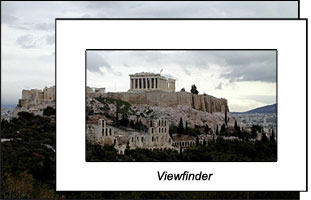 Unity: and organization of parts so that all contributed to a coherent whole. It is the combined result of all principles of design.
Unity: and organization of parts so that all contributed to a coherent whole. It is the combined result of all principles of design.
Uppercase: in typography, capital letters, which gained this alternative name from the standard location in which typesetters stored them.
- V -
Value: the lightness or darkness of a color; contrasts between light and dark.
Vanishing point: in perspective, the point on the horizon in the distance where two lines seem to converge and visibility ends.
Vermilion: scarlet red, a variable color that is vivid red but sometimes with an orange tinge.
Viewfinder: a tool used to look through to compose an image. This tool is helpful in selecting the most interesting composition to be found in a larger image by cropping out unwanted perimeters. In photography a viewfinder is what the photographer looks through to compose, and in many cases to focus, the picture (see illustration).
Vignette: an image or painting where the borders are undefined and seem to fade away gradually until it blends into the background.
Viridian: a blue-green pigment composed more of green than blue. Viridian takes its name from the Latin viridis meaning "green".
Visual economy: as used in art, a paring down to only the essential elements required to achieve the desired effect; a.k.a. simplicity.
Volume: the mass of three-dimensional shapes in space.
- W -
Wash: used in watercolor painting, brush drawing, and occasionally in oil painting to describe a broad thin layer of diluted pigment or ink. Also refers to a drawing made in this technique.
Warm color: Colors whose relative visual temperature makes them seem warm. Warm colors or hues include red-violet, red, red-orange, orange, yellow-orange, and yellow.
Watercolor: a water-based paint that is a translucent wash of pigment; a painting produced with watercolors.
Wet-on-wet: a painting technique that is well-known as being the primary method of painting used by Bob Ross. Since lighter colors will usually mix with darker colors if laid over top of them while wet, the technique relies on painting from light colors up. This gives the painting a soft look, and allows the colors to be blended to the painter's desire.
Woodcut: illustrations produced when the original printing plate was engraved on a block of wood. One of the oldest methods of printing, dating back to 8 th century China.
Worm's-eye view: as if seen from the surface of the earth, or the floor Looking up from below.
WYSIWYG: (pronounced "wizzy-wig") is an acronym for What You See Is What You Get, and is used in computing to describe a seamlessness between the appearance of edited content on the monitor and final product.
- X -
Xerography: photographic process which uses an electrically charged metal plate. On exposure to light the electrical charge is destroyed, leaving a latent image in which shadows are represented by charged areas. A powdered pigment dusted over the plate is attracted to the charged areas, producing a visible image.
Xylography: an early form of wood engraving, was first seen in China in the 1st century. It is the oldest known engraving technique.
- Y -
Yellowing: a discoloration that can occur over time in oil paintings due to excessive use of linseed oil medium; applying any of the varnishes that are prone to yellow with age; or most often – an accumulation of dirt embedded into the varnish.
- Z -
Zinc white: a common white pigment, zinc white is a brilliant white synthetically derived from the metal zinc.
Zinnober green: another name for chrome green.
